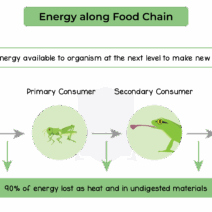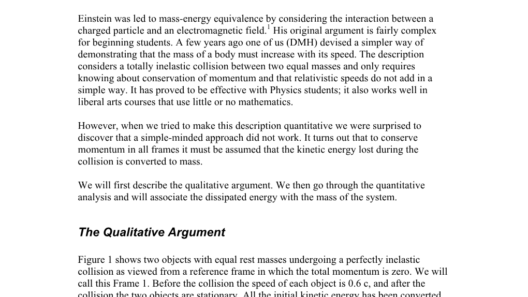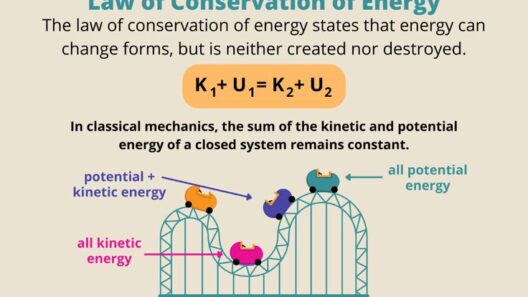In the discourse on sustainable agriculture, the order in which crops are planted plays a pivotal role, not merely in optimizing yield but also in conserving energy. Cropping sequences, often neglected in conventional farming discussions, reveal a nuanced strategy that goes far beyond surface-level observations. This exploration into crop order elucidates its significant impact on energy conservation within agricultural systems.
To understand the relation of crop order to energy conservation, it is essential to first examine the principles of crop rotation and intercropping. Crop rotation involves alternating the types of crops grown in the same area sequentially over time. Intercropping, on the other hand, is the practice of cultivating two or more crops simultaneously in the same field. Both methods can dramatically influence energy dynamics in a farm ecosystem.
One predominant observation in agricultural practices shows that monoculture—growing a single crop year after year—tends to deplete soils of specific nutrients. This depletion often necessitates the use of synthetic fertilizers, which not only require significant energy for production but also contribute to greenhouse gas emissions during their application. When crops are rotated, different plants draw on varying soil nutrients, allowing the soil to naturally replenish itself. Such a system significantly mitigates the need for energy-intensive chemical fertilizers, thus promoting a lower carbon footprint.
Additionally, diverse planting through crop rotation aids in pest and weed management. A common phenomenon within monoculture systems is the proliferation of pest species that quickly adapt to their environment. This necessitates increased pesticide applications that consume resources and energy. By varying crop types, farmers can interrupt pest lifecycles, reducing their need for chemical interventions and allowing for reduced fossil fuel consumption typically associated with pesticide application. This management of pests conserves not only energy but also enhances the ecological balance of farming systems.
In the realm of intercropping, the benefits are multifaceted. Different crops often utilize different layers of soil or sunlight due to variations in their growth structures and root systems. The phenomenon known as ‘complementary planting’ allows crops to share resources efficiently, thereby optimizing land use. For instance, a deep-rooted crop may extract nutrients from lower soil layers while shallow-rooted plants capitalize on surface nutrients. This kind of integration diminishes the need for artificial irrigation systems, which are energy-intensive to operate, and promotes water conservation as well.
Planting legumes, known for their ability to fix nitrogen in the soil, in conjunction with cereals has been a proven strategy for enhancing soil fertility. Legumes serve a dual purpose: they improve soil health while requiring less synthetic fertilizer, leading to decreases in energy usage associated with agricultural practices. This reduced reliance on fossil fuel-driven inputs underscores how intelligent crop sequencing is a genuine pathway towards energy conservation in agriculture.
Weather patterns and climate variability also play crucial roles in influencing the effectiveness of crop order. Certain crops are more resilient to specific climate conditions, including drought or excessive rainfall. By selecting a strategic crop order that takes into account local weather patterns, farmers can optimize growth, thus reducing the amount of energy needed for irrigation and other interventions. Understanding these intricate relationships between crops and climatic factors emphasizes the importance of planning and adaptability in energy conservation.
Moreover, conservation tillage is a practice that complements thoughtful crop order. Minimizing soil disturbance not only enhances soil health but also aids in carbon sequestration, effectively acting as a countermeasure against climate change. By carefully planning crop sequences, farmers can implement conservation tillage methods more effectively, leading to further reductions in energy inputs typically associated with plowing and soil preparation.
Economic factors also merit consideration. The indirect energy costs associated with crop logistics, including transportation and storage, can be influenced by the chosen crop order. Selecting crops with complementary harvest times can streamline operations, reducing energy consumed in harvesting, transporting, and processing. This level of efficiency illustrates that thoughtful crop sequencing is not merely an ecological concern; it is deeply intertwined with economic sustainability.
In summary, the question of whether crop order in farming can help conserve energy has profound implications. Through strategic and informed agricultural practices such as crop rotation and intercropping, energy conservation can be achieved in numerous ways. These strategies promote soil health, manage pests, optimize resource use, and provide avenues for economic efficiency. Recognizing the interplay between crop choice, agricultural practices, and energy conservation presents an opportunity for both farmers and policymakers to innovate in the face of climate challenges.
Ultimately, as global society continues to confront the intricacies of climate change, the methods employed in agricultural practices will be critical in realizing sustainable solutions. By placing emphasis on crop order and adopting holistic approaches to farming, stakeholders in the agricultural sector can foster a greener, more energy-efficient future. Such practices are not merely beneficial; they are essential for the sustainability of our food systems and the environment at large.








